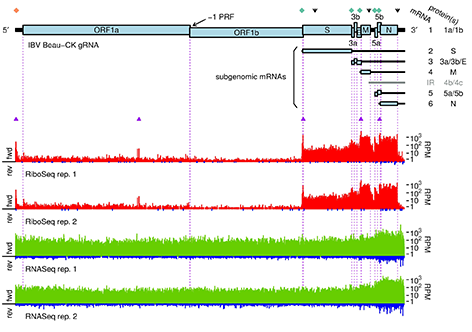Biography
Following a PhD at the University of York, where I studied transcriptional activation and DNA bending of cyclic AMP receptor protein-responsive promoters under the supervision of Jim Hoggett, I have worked in Cambridge, focusing principally on the role of RNA structures in the translational regulation of gene expression, using viruses as model systems. Most of my publications concern protein synthesis, especially the phenomenon of ribosomal frameshifting, a translational regulatory event employed by numerous viral and some cellular genes. The work includes the first demonstration of a role for RNA pseudoknots in the regulation of translational elongation, the development of an exogenous tRNA-dependent rabbit reticulocyte lysate system, the description of novel translational recoding events in cellular genes, the first visualisation of mammalian ribosomes stalled during translocation and the first demonstration of -2 frameshifting at a viral frameshifting signal. More recently, we have started investigation of the protein-dependent frameshifting signals of cardioviruses and arteriviruses, and have exploited ribosome profiling to examine these regulatory signals within the context of infected cells. These studies include the first ribosome profiling analysis of an RNA virus (the betacoronavirus mouse hepatitis virus). The Department of Pathology at the University of Cambridge provides excellent research facilities and a broad expertise in virology/molecular cell biology. Presently, our work focuses on unusual RNA structures in virus and cellular genomes.
Research
The Brierley laboratory, in close collaboration with the groups of Professor Andrew Firth (Pathology) and Dr Chris Hill (University of York) studies the regulation of virus gene expression at the level of protein synthesis, especially the phenomenon of programmed -1 ribosomal frameshifting (-1 PRF). During translation, ribosomes generally stay in register and decode each codon triplet by triplet. However, some viral mRNAs have embedded signals that instruct ribosomes to change register, ie: to frameshift, at a defined position and to continue translation in an overlapping reading frame. Frameshift signals are exploited by many viruses to co-ordinate gene expression from overlapping coding sequences. The best studied examples come from the retroviruses. Here, the coding region for the enzymatic functions of the virus (pol) often overlaps the upstream structural protein coding sequences (gag) and is in the -1 reading frame. Expression of the pol gene requires a -1 frameshift at the end of gag and the Pol protein is produced as a fusion with the Gag protein. Our aim is to understand the frameshift process with a view to inhibiting it and thus to prevent virus replication. Many other RNA viruses have been shown to utilise a frameshift strategy in their replication cycle and there are emerging examples in cellular genes. A closely related translational phenomenon, termination codon suppression (readthrough), has also been described. Here, viral mRNA signals cause the misreading of stop codons, and an amino acid is inserted instead, at a certain frequency, resulting in an elongated polypeptide.
We are studying frameshifting and readthrough using coronaviruses and retroviruses as model systems. A frameshift signal has two elements, a "slippery sequence" where the ribosome enters the new reading frame, followed, in most cases, by an mRNA structure, often an RNA pseudoknot. A bipartite signal is also employed in readthrough but here, the pseudoknot induces suppression of an upstream stop codon. Recently, we have also identified novel signals where there is no stimulatory RNA structure and frameshifting is stimulated by the binding of trans-acting proteins, such as the 2A protein of encephalomyelitis virus. Our aim is to determine the mechanism by which these stimulatory signals induce the ribosome to change frame/misread the stop codon. Further, we are interested in gaining an understanding of RNA pseudoknot structure and function. The pseudoknot motif has been described in all cellular RNAs described to date and pseudoknots are clearly key regulatory RNA elements. Projects are underway to study
(1) Transacting factors, both protein and RNA, which influence frameshifting/readthrough (2) the structure of frameshift and readthrough stimulatory RNAs and proteins (3) ribosome conformation during frameshifting/readthrough (4) the effect on virus replication of altering frameshift/readthrough efficiencies.
We are also using the technique of ribosome profiling to globally-analyse RNA virus translation and virus-host responses. We are particularly interested in identifying novel examples of translational control.
- Research Associate:
Sawsan Napthine - Graduate Students:
Conor Fairhead and Harry Francis
Publications
1. Hill CH, Pekarek L, Napthine S, Kibe A, Firth AE, Graham SC, Caliskan N, Brierley I. (2021). Structural and molecular basis for Cardiovirus 2A protein as a viral gene expression switch. Nat. Commun. 12(1):7166.
2. Napthine S, Hill CH, Nugent HCM, Brierley I. (2021). Modulation of Viral Programmed Ribosomal Frameshifting and Stop Codon Readthrough by the Host Restriction Factor Shiftless. Viruses. 13(7):1230.
3. Dinan, AM, Keep S, Bickerton E, Britton P, Firth AE and Brierley I. (2019). Comparative Analysis of Gene Expression in Virulent and Attenuated Strains of Infectious Bronchitis Virus at Subcodon Resolution. J. Virol. 93(18), pii: e00714-19.
4. Napthine S, Ling R, Finch LK, Jones JD, Bell S, Brierley I, Firth AE. (2017). Protein-directed ribosomal frameshifting temporally regulates gene expression. Nat. Commun. 8, 15582.
5. Napthine S, Treffers EE, Bell S, Goodfellow I, Fang Y, Firth AE, Snijder EJ, Brierley I. (2016). A novel role for poly(C) binding proteins in programmed ribosomal frameshifting. Nucleic Acids Research 44, 5491-5503.
6. Irigoyen N, Firth AE, Jones JD, Chung BY, Siddell SG, Brierley I. (2016). High-resolution analysis of coronavirus gene expression by RNA sequencing and ribosome profiling. PLoS Pathog. 12:e1005473.



